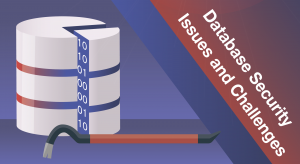
Top 10 Most Common Database Security Vulnerabilities
Understanding Database Vulnerabilities
Database vulnerabilities are weak points in database configurations, access controls, and infrastructure that can be exploited by attackers or insiders. These vulnerabilities pose serious risks to sensitive data, system performance, and business continuity.
From SQL injections to missing security patches, organizations often overlook critical flaws until a breach occurs. Identifying and addressing database vulnerabilities is essential for reducing exposure and meeting compliance requirements.
Solutions like DataSunrise help organizations monitor, audit, and secure their databases by detecting misconfigurations, controlling access, and blocking suspicious activity in real time.
1. Security Testing Before Database Deployment
Most databases go through just functional testing ensuring its supreme performance. However, security testing of databases shall be done as well to check that the databases are not doing things that they shouldn’t be doing.
2. Default, Blank, and Weak Username/passwords
An organization may have hundreds or even thousands of databases. And it may be a pretty tough job to keep all of them under control. A very good step towards a better database security is to remove default, blank and weak log-in credentials. Hackers usually keep track of default accounts and use them whenever they have this chance to hack databases.
3. SQL Injections
Maybe the most popular method to get sensitive data from any database for hackers. A malicious code is embedded into web applications connected to databases. As a result, cybercriminals may have unlimited access to sensitive data inside databases. So, the best way to protect information from SQL attacks to protect web-facing databases with firewall and to keep in mind SQL injections threat and take proactive actions at the development stage.
4. Extensive user and user group privileges
All user privileges shall be taken under strict control. Users should have access only to the data they really need to do their jobs. However, it’s often the case when ordinary users may have superusers privileges which is very bad for database security. Many researchers recommend using group-based approach to privileges, that is making users part of a group and managing the privileges of the group collectively instead of assigning direct rights.
5. Missing Security Patches For Databases
According to researchers more than a third of assesses databases are missing security updates or running old version of the software. In many cases the majority of these systems were lacking database security patches more than a year old. Definitely, this is the fault of database owners and administrators who for some reasons find it difficult to apply the relevant patches. Such cases show that many companies don’t have a reliable and consistent patch-management and database security system. This fact is very worrying.
6. Audit Trail Tracking
About a third of databases have database auditing either missing or misconfigured. However, this is a critical feature what helps to track and audit all database events. So, every single instance of data modification and access is immediately registered. Not tracking all the database events makes it more difficult when it comes to forensic investigation if a breach occurs. Some database administrators may think that this feature is not so important, but practical experience shows that it is vital to have a database auditing tool when building a database.
7. Database Backups
Threats to databases may come from inside and outside. And in many cases companies are thinking about internal threats more than about external. Business owners can never be 100% sure of the company employees’ loyalty. Almost anyone who has unrestricted access to data can steal it and sell on the Dark Web. Usually when people think about database protection they think about original database they want protected and forget about database backups, security of which should be treated with the same seriousness and care. This point brings us to the next point below.
8. Poor Encryption and Data Breaches
Though it may seem obvious to you it may not be so obvious for database owners and administrators that all data inside database be preferably in the encrypted form. It is true both for the original database and database copies. There are network interfaces within the databases which can be easily tracked by hackers if your data is not encrypted.
9. Denial-of-service Attacks
A Denial-of-Service (DoS) attack is a type of an attack that hackers and cybercriminals use to shut down a machine or network, making it inaccessible to its intended users through flooding the target database with traffic or queries. As a result, database users can’t retrieve any information from databases which makes them useless for different period of time. But DoS attacks can be counteracted. Please read more articles on our Block section to learn more.
10. Outdated Database Protection Tool And Compliance With sensitive data protection regulations
Not all database protection systems are same. The IT technologies are developing, and, unfortunately, hackers tools are developing too. That is why it’s vitally important to make sure that your database protection systems are up-to-date. DataSunrise Database Security Suite is a state-of-the-art database protection tool which can protect your database and data inside from any threats both internal and external. Having a database protection tool in place is a prerequisite for compliance with national and international sensitive data protection regulations, for example, GDPR.
